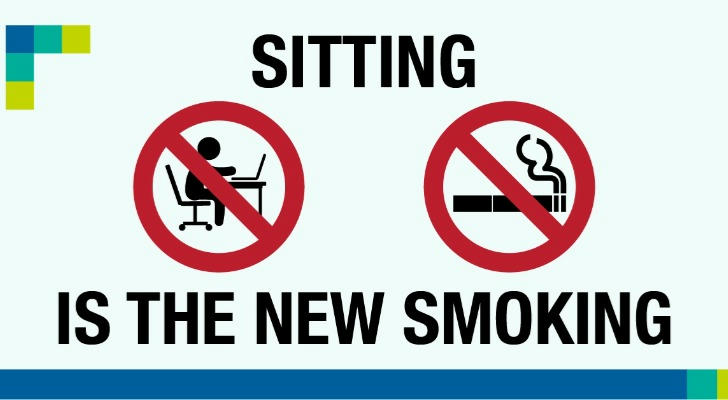Sit Less, Live More: The Real Dangers of Sitting Over 6 Hours a Day
Modern life comes with its perks: instant food delivery, remote work, endless streaming options. But hidden beneath these comforts is a silent health threat—sitting too much. If the daily routine includes sitting for six hours or more, it's worth knowing what that chair time might be costing.

1. The Sitting Epidemic: It’s Bigger Than You Think
Recent studies reveal a global trend that's hard to ignore. According to the World Health Organization (WHO), physical inactivity is the fourth leading risk factor for global mortality, causing an estimated 3.2 million deaths annually. In the U.S., the average adult sits for 6.4 hours per day. Office workers? Often closer to 10.
🔹 What’s so bad about sitting? Think of the human body as a machine designed to move. When it's parked for long periods, especially day after day, key systems start to break down—slowly and silently. It's not just about feeling stiff or having a sore back. We're talking about:
● Increased risk of heart disease
● Higher chances of developing type 2 diabetes
● Weight gain and slower metabolism
● Chronic pain in the neck, back, and hips

Studies from Harvard Medical School also link prolonged sitting to higher levels of anxiety and depression. Movement doesn’t just keep the body healthy—it helps keep the mind sharp, too.
2. Let’s Zoom In: How Sitting Affects Metabolism and Blood Flow
Sitting for extended periods slows down the body’s ability to break down fats and regulate blood sugar. A study published in the journal Diabetologia found that every additional hour of sitting per day was associated with a 22% increase in the risk of type 2 diabetes.
🧠 Blood flow to the brain also decreases, impacting concentration and mental performance. Muscles become less responsive to insulin, which not only contributes to diabetes but also throws hormone balance off-track.
And here's the kicker: even regular exercise may not completely undo the effects of prolonged sitting. A 2017 study in the Annals of Internal Medicine found that high amounts of sedentary behavior were associated with greater risk of early death, even among those who exercised daily.
Extended sitting also increases triglyceride levels and lowers HDL (the "good" cholesterol), setting the stage for cardiovascular issues. That “Netflix marathon” might feel relaxing, but inside the arteries, a very different story unfolds.
3. Pain Points: The Back and Neck Take the Hit
If the body had a complaint department, the spine would be its most frequent caller. Sitting, especially with poor posture, compresses the spinal discs and strains muscles. Prolonged seated posture can lead to:
●Tension headaches

●Herniated discs
●Chronic lower back pain
●Tight hip flexors, which affect mobility
🪑 Posture Alert! Slouching while typing or leaning over a phone amplifies the pressure on the spine. The neck, shoulders, and lower back end up carrying the brunt.
And it’s not just about comfort—these physical changes can impact productivity, mood, and even how well one sleeps at night. When the back aches, the brain has a hard time focusing on anything else.
4. Solutions That Don’t Involve the Gym
Good news—breaking the sitting cycle doesn’t require a full-on fitness routine. Small, consistent actions can make a huge difference:
🔸 20-8-2 Rule
Sit for 20 minutes, stand for 8, and move around for 2. Set a timer if needed.
🔸 Standing Meetings
Swap long seated calls for walking meetings or standing Zooms.

🔸 Desk Hacks
Try using a raised surface to make a DIY standing desk, or take calls while pacing around.
🔸 Movement Triggers
Place a sticky note reminder near the screen: “Have you moved in the last 30 minutes?” Even stretching or walking to refill a water bottle counts.
🔸 Stretch Snacks
Take “movement snacks” throughout the day—quick stretches for the neck, shoulders, hamstrings, and calves. They only take 2-3 minutes but can re-energize both the body and brain.
5. Long-Term Gains from Short-Term Movement
The benefits of reducing sedentary time are far-reaching. People who incorporate more movement throughout the day report:
● Higher energy levels
● Improved concentration
● Less joint stiffness
● Better sleep quality
A report from the American Cancer Society even linked sitting over 6 hours a day with a 19% higher risk of premature death, compared to those who sit less than 3 hours. The shift doesn’t have to be dramatic—it just has to be consistent.
It’s not just about extending life—it’s about improving the quality of those years. More movement means more freedom, better health, and fewer aches holding things back.
Final Thoughts
Sitting might feel like the most harmless part of a daily routine, but over time, it adds up. The good news? The solution is simple and surprisingly achievable: stand up, move often, and stay aware of posture. These small shifts add up to something powerful—a body that’s not just surviving the modern lifestyle, but thriving in it.
After all, the chair isn’t the enemy. Inactivity is. So, get up, stretch a little, and take those steps toward a healthier day—literally.
